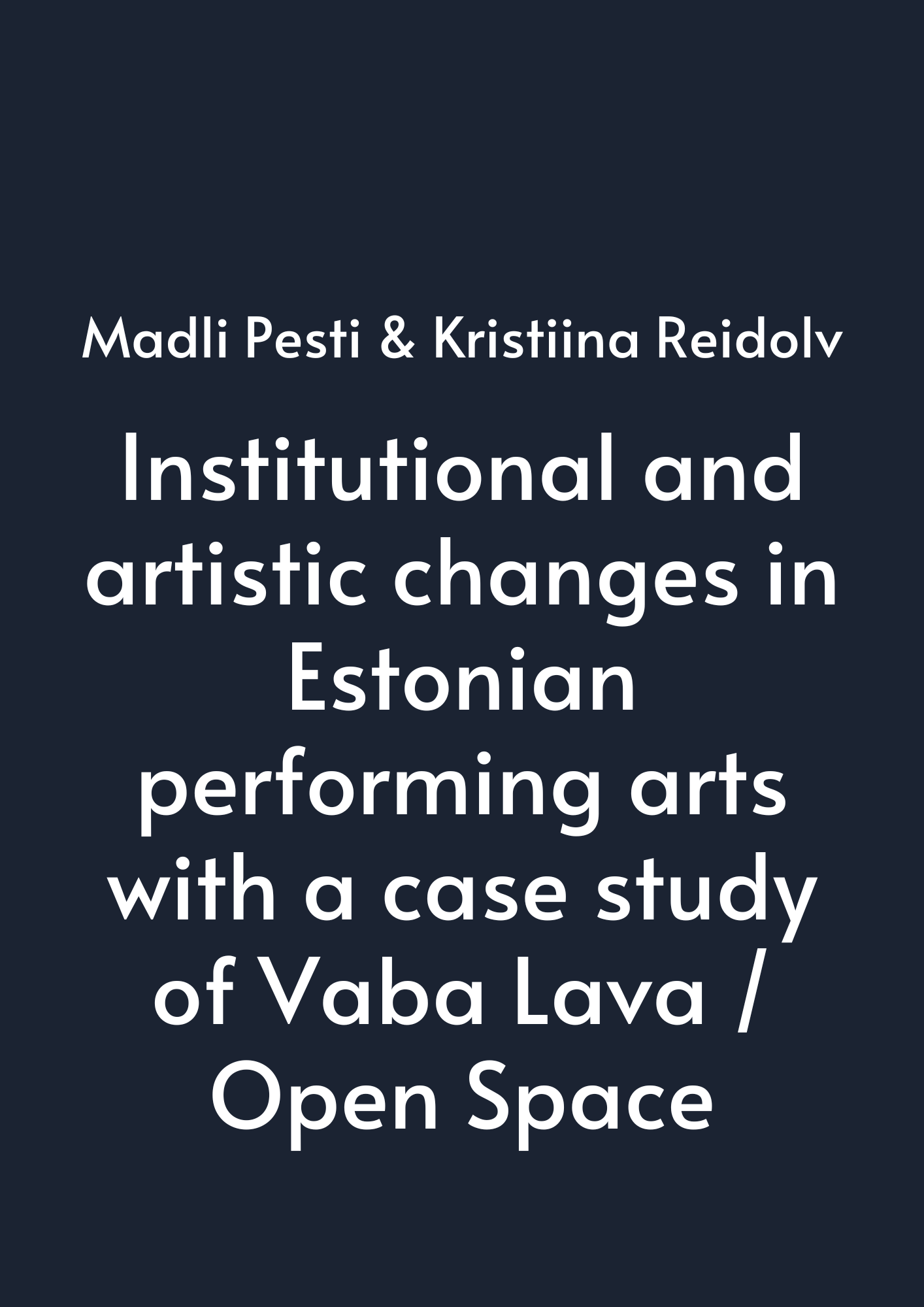Institutional and artistic changes in Estonian performing arts with a case study of Vaba Lava / Open Space
13.08.2018 17:13

Pesti, Madli; Kristiina Reidolv 2018. Institutional and artistic changes in Estonian performing arts with a case study of Vaba Lava / Open Space. – Nordic Theatre Studies, vol. 30, no. 1. https://tidsskrift.dk/nts/article/view/106917/156681
Abstract. The article gives an insight into the theatre system of Estonia, the development of the system in the turmoil of history and the current situation in the 21st century.The first part of the article looks back at a period of 30 years: what happened with the Estonian theatre system when it moved from the Soviet occupation period into the Re-public of Estonia. We show the developments in the funding system of theatres during the big changes in the socio-economic environment. We give an insight into how thea-tres are funded nowadays: how the funding of public and private theatres is connected with the quantitative (the number of premieres, performances and visits to the theatre) and qualitative (nominations, awards and artistic tendencies) results. The second part of the article is a case study. We introduce a new type of performing arts organization in the Nordic and Baltic countries – Vaba Lava (Open Space) in Tallinn, which is funded as a PPP (public private partnership) in cooperation between the pri-vate and the public sector. Vaba Lava offers an open platform to all private theatres and companies offering them both a stage for performing as well as support services. The core of the Vaba Lava programme is its International Curated Programme. Performanc-es of the programme are selected by a team of curators who announce an International Open Call. The projects are selected from the applications submitted to the competition. We show how this kind of theatre is adapting to the funding system and what kind of performance strategies and working practices have been developed. We analyse what are the main artistic ideas of the international programme that also gives voice to under-privileged people talking about socially relevant themes. The general research questions of the article are: how has Estonian theatre developed during the last decades and how it is adapting to the prevailing financial system? What kind of performance strategies and working practices have been developed and how do the economic conditions affect the artistic outcome?
Keywords. Estonian theatre system, financing of theatres, new working methods